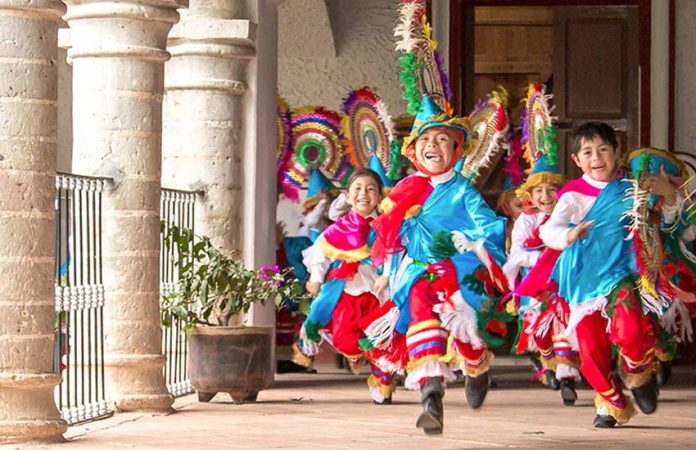Don’t let the difficult-to-pronounce name deter you — because if we did that, we wouldn’t be able to visit half of Mexico; Tlatlauquitepec (Tlat-lau-key-tay-peck), Puebla, is an absolute gem.
Affectionately known as Tlatlauqui by the 9,400 or so inhabitants, this tiny pueblo is set around el Cerro del Cabezón, an area from which adventure-seekers can mountain bike, rappel, hike, and rock climb.
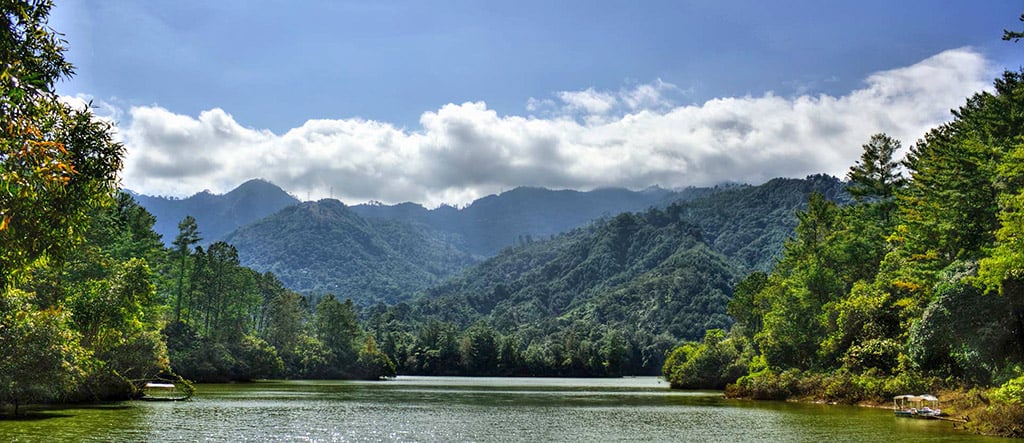
My friend and I arrived at Tlatlauquitepec after a more-than two-hour Uber ride from the picturesque city of Puebla, our jumping-off point, to a variety of Pueblos Mágicos still ripe for exploration.
We checked into Hotel San Jorge, perched on the side of a mountain with an unobstructed view of the aforementioned Cerro del Cabezón, if you don’t count the hazy mist of fog that gracefully drifts across the mountain range for several minutes most early mornings.
Inside this charming hotel are clean rooms, each with a sweeping vista, a museum of quirky local artifacts and a traditional Mexican-style kitchen from which a homemade, local breakfast is provided each morning. The hotel is surrounded by flowers, fruit trees and a lovely orchid garden. Arriving from CDMX, the abundance of fresh, crisp air is a real treat. The owners, Lolita and Jorge, are jolly and doting, as are their staff.
After dropping off our things, my friend and I immediately tucked into one of the very few restaurants in town. Terra Restaurant has an extensive menu, most of which we bypassed in favor of fish. Tlatlauqui is just two hours from the coast of Veracruz, so the seafood is fresh, bountiful, and so delicious that we returned the next day for more.
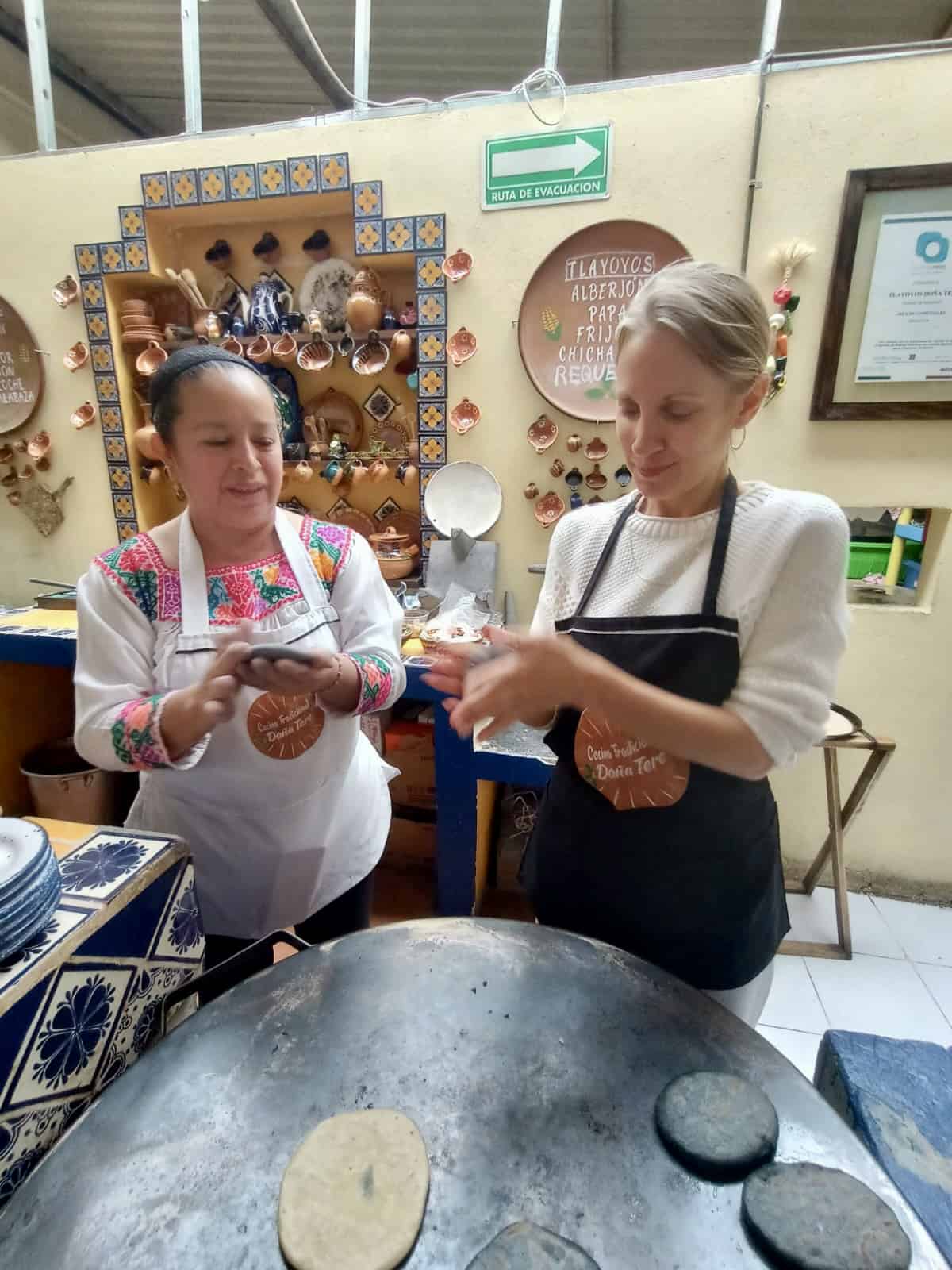
As we filled up on fried róbalo and copious tragos of mezcal, a guitar player strummed and sang Mexican classics. And then…it rained. Poured, in fact. From the covered porch where we dined we could enjoy the storm and fall deeply into this oh-so-romanticMexican moment.
After dinner, we strolled to the traditional zócalo (main square). There were a handful of casual eating establishments and, of course, a church. The town wasn’t buzzing, per se, but it was lovely nonetheless.
The next morning, I decided to take a cooking class while my friend wandered the local market. At La Cocina Tradicional “Doña Tere,” I learned how to make traditional tlacoyos, a pre-Hispanic snack of corn tortillas stuffed with delicious fillings like frijoles, habas (broad beans), or chicharrón (fried pork rinds). Doña Tere herself taught me how to knead the maiz, form the dough, stuff it and cook it on a comal — the traditional griddle on which many Mexican foods are prepared.
The number of tlacoyos I ate is none of your business, but I will admit that despite being stuffed to the gills, I proceeded to the zócalo in search of something sweet. What I found here was one of the best markets I’ve been to in Mexico.
The Thursday tianguis gathers vendors selling local produce collected from the top and bottom of the Sierra Madre Mountain range, which leads to a wide variety of fruits and veggies for purchase.
There is an entire section dedicated to fresh fish from Veracruz, which you can take home to cook or eat right there at the stand. It was absolutely brimming with locals, and my friend and I quickly realized that we were probably the only foreigners there (I loved it).
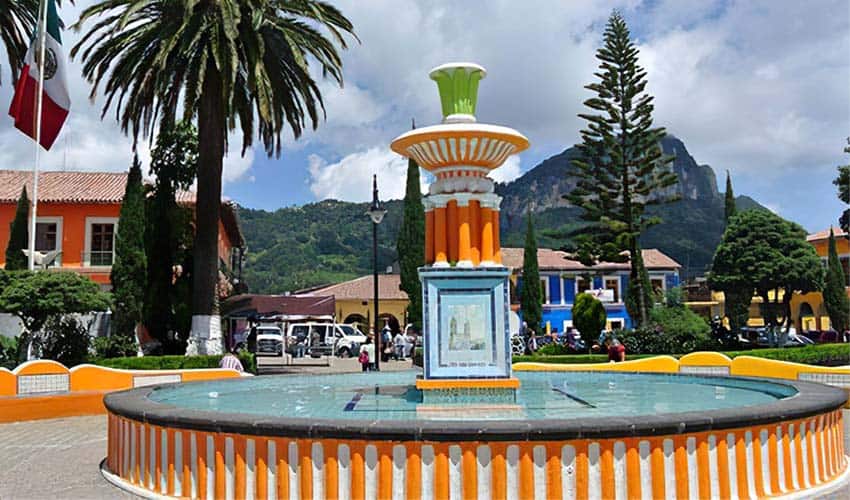
That evening, we had big plans. So we returned to Terra Restaurant for a mid-afternoon feast of fish and mezcal before our 6:30 p.m. pickup from the hotel lobby. We hopped in the SUV of a local guide and thus commenced one of my favorite activities — of all time.
From town, we proceeded to drive down the mountain, passing through a certified rainforest. We made several stops to soak in the humidity and snap photos of waterfalls, rivers and deep valleys.
We arrived at the Soledad Reservoir at dusk, a massive lake that’s 4 km in length. It provides electric energy to the nearby cities. For its hydroelectric use (and not because it’s stunningly beautiful and full of wildlife and delicate ecosystems), it has been protected by the government.
My friend and I slipped into some very gaudy life jackets and hopped into a lancha (small boat) with “Sixty”, a sixty-ish year-old man about 5 feet tall and strong as an ox who rowed us from one end of the lake to the other, without stopping, for a 90 full minutes. We passed only two other lanchas during our tour.
As the moon rose, the trees began to sparkle as if they were covered in Christmas lights. And they were, in a way, as July is prime luciernaga (firefly) season — giving us exactly the dreamlike vista we were after.
“I think this is what happens when you die,” my friend whispered to me, not wanting to disturb the tranquil setting; all we heard were the sounds of birds, bugs, and the breaking of the oar on the lake’s surface.
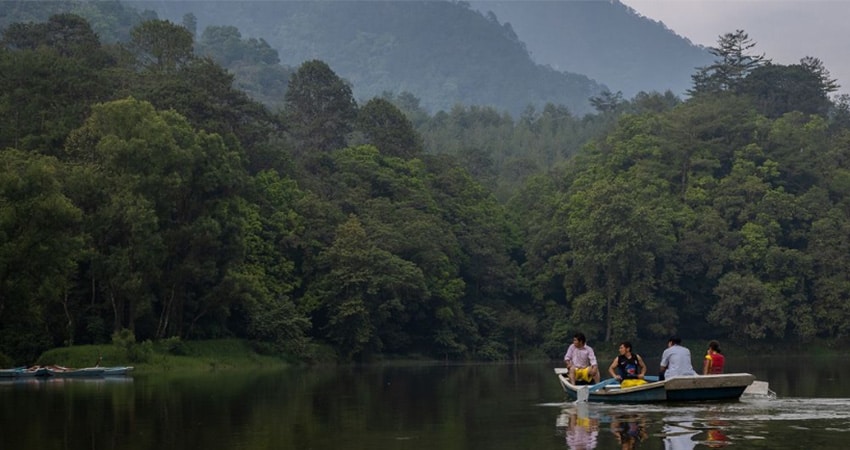
I felt immediately that she was right. When I arrive at the pearly gates of whatever-might-be-next, I had better arrive on this very boat, in this lake, with this view.
After wiping away tears of nostalgia and awe at the beauty of this experience, Sixty asked if we wanted to try rowing the boat toward the dock. While I wasn’t quite as adept as he was, it was the perfect ending to a perfect evening.
The following morning, we headed to the zócalo for a leisurely coffee and then accepted a ride from Jorge to the bus station, as Uber does not exist here. There are two stations one can use to return to the big city (Puebla in our case), but an accurate online schedule for them doesn’t seem to exist. (We missed our first bus.)
Our ride back took about three hours and landed us at CAPU, the less fancy of Puebla’s two bus stations, and within 20 minutes, we were snug in our hotel in the historic center. Over dinner, we raved about our days spent in the mountains and how soon we could feasibly return.
For those craving a deep dive into the contrasting layers of Mexico’s landscape, Tlatlauquitepec is a true Magical Town and shouldn’t be missed.
Bethany Platanella is a travel planner and lifestyle writer based in Mexico City. She lives for the dopamine hit that comes directly after booking a plane ticket, exploring local markets, practicing yoga and munching on fresh tortillas. Sign up to receive her Sunday Love Letters to your inbox, peruse her blog, or follow her on Instagram.
